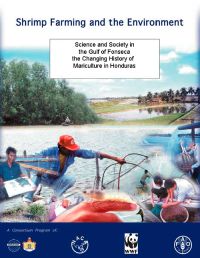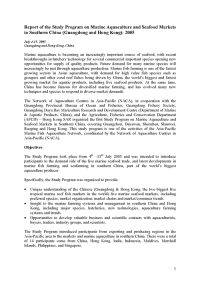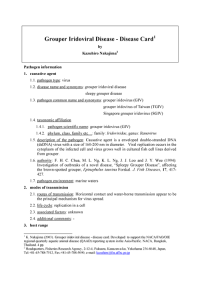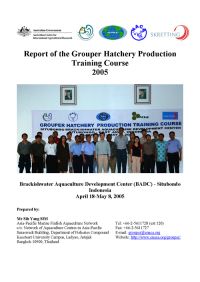The case study for this report was conducted in the coastal village Pematang Pasir, Sumatra, Indonesia. Pematang Pasir hosts a pilot project promoting environmentally and responsible shrimp aquaculture implemented by the Indonesian Coastal Resources Management Project. This paper describes the lessons learned to date and offers strategies for community-based coastal resource management, which can be used in a broader perspective as more general guidelines for community-based and participatory development of shrimp aquaculture in marginalised coastal areas.
Shrimp farming in southern Honduras has generated considerable controversy around the issues of natural resource access and management. This case study reviews the reasons for and history of that controversy. The study relies on an extensive literature review and insights from the author’s previous research trips to southern Honduras between 1991 and 2000. In addition, representatives from several government offices, the shrimp industry, and the primary nongovernmental organisations were interviewed in May 2000.
A study tour of seafood markets in southern China (Guangdong Province and Hong Kong SAR) was conducted in 2005. The programme provided participants with exposure to some of China's larges live marine seafood markets, provided insight on marine farming systems and management including major species and technologies, and provided participants with the opportunity to develop valuable business and scientific contacts with farmers, buyers, traders, industry groups and scientists.
Recognising the importance of iridoviral disease, in terms of its potential to spread and cause economic loss, grouper iridoviral disease was included for listing in the quarterly aquatic animal disease (QAAD) list under any other diseases of importance effective for reporting from first quarter of 2003. This disease card is developed to provide information to national authorities and support the regional NACA/FAO/OIE QAAD reporting system.
This is the report of the 3rd Regional Grouper Hatchery Production Training Course, which was conducted at the Brackishwater Aquaculture Development Center, Situbondo, East Java, Indonesia from April 18-May 8, 2005. There were a total of 17 participants coming from Australia, Brunei Darussalam, Indonesia, Malaysia, Maldives, Marshall Islands, Singapore, and Vietnam. The training consisted of a mixture of theory, practical and field trips for the participants.




